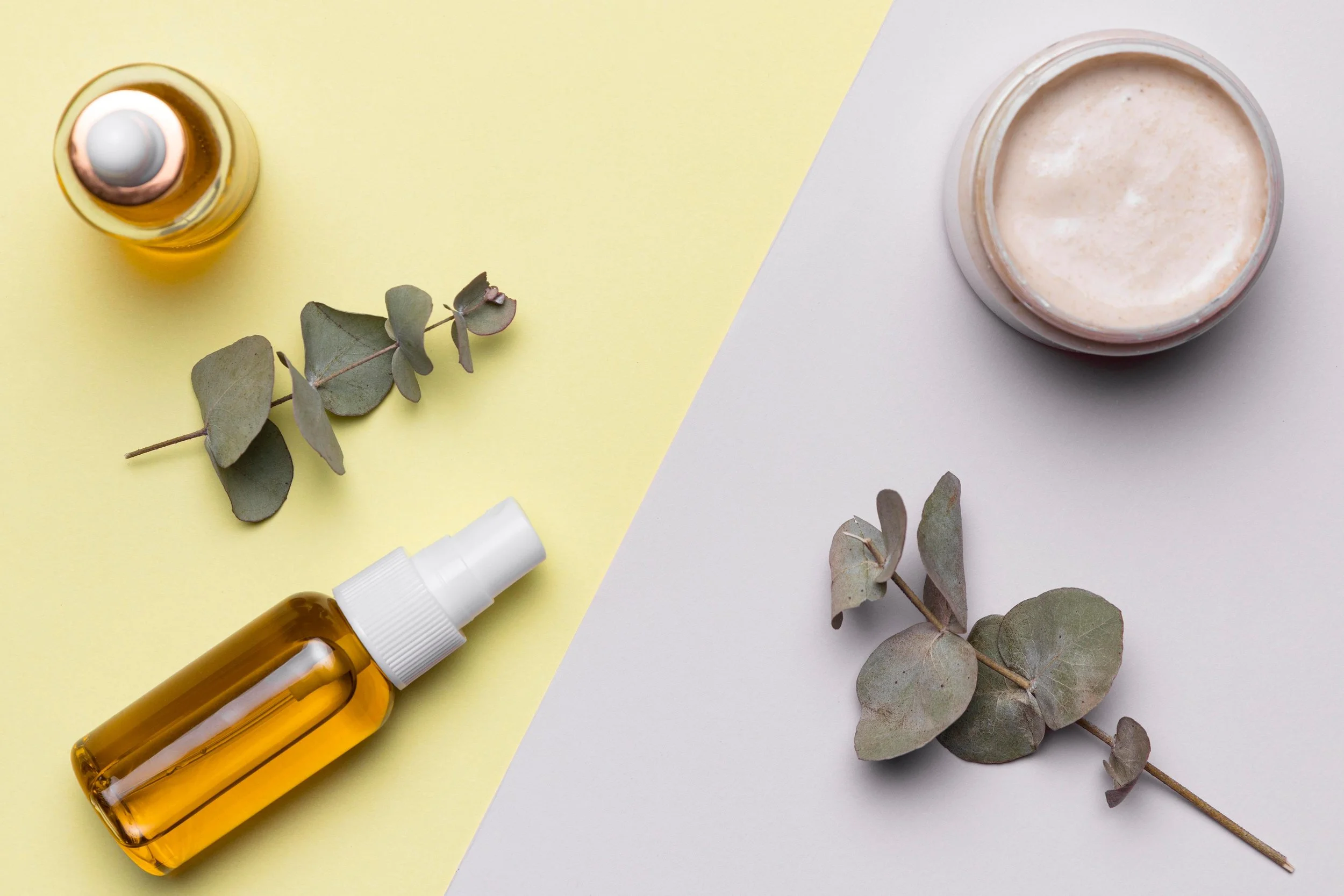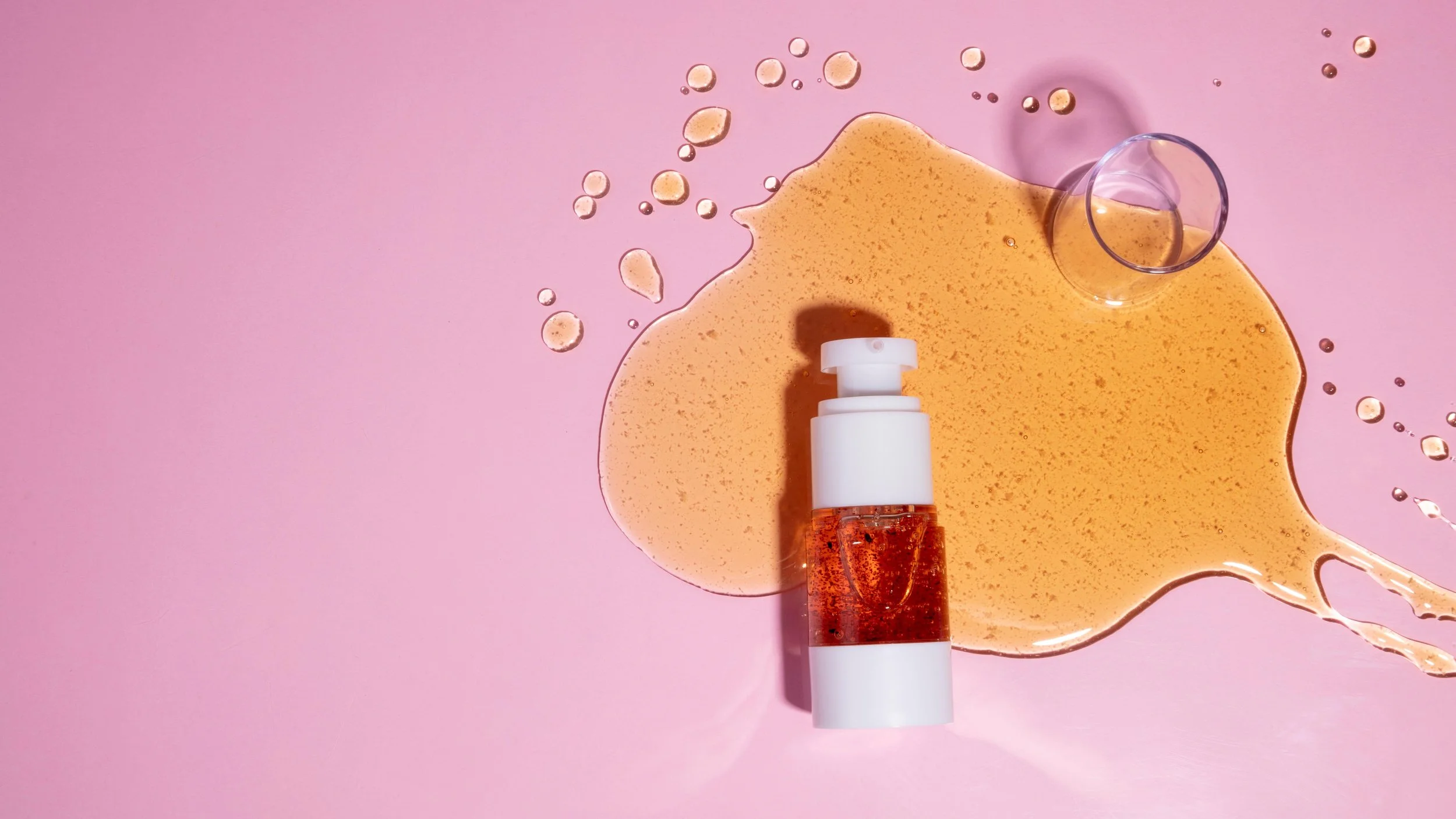The Truth About Face Oils (And Why You Might Actually Need One)
Disclosure: This post contains affiliate links. As an Amazon Associate, I earn from qualifying purchases—at no extra cost to you. I only recommend products I truly believe in.
Face oils are everywhere. They’ve gone from crunchy Whole Foods aisles to luxe glass bottles on Sephora shelves, and now influencers are mixing them into moisturizers, tapping them over makeup, and swearing they’re the key to glowing skin.
But let’s be real—face oils are confusing. What do they actually do? Are they moisturizers? Will they break you out? And why are some people acting like they’re miracle elixirs while others say they ruined their skin?
Let’s clear up the slippery facts and get to what actually works.
🌿 What Are Face Oils?
At their core, face oils are oil-based products rich in fatty acids and skin-nourishing compounds. Most are plant-derived—like rosehip, argan, or marula—or bio-identical, like squalane (a stable form of a compound your skin naturally produces).
They don’t contain water, which makes them very different from serums or moisturizers. Instead, they’re what we call occlusives and emollients—they soften the skin and lock in hydration.
🔬 A 2017 review in the International Journal of Molecular Sciences explains that many plant oils act as both emollients and occlusives, improving barrier repair and reducing water loss through the skin’s surface.
💧 What Do Face Oils Actually Do ?
Face oils aren’t magical, but the right ones can absolutely elevate your skincare routine. Here's how:
1. They reinforce your skin barrier
Your skin barrier is like a brick wall—skin cells are the bricks, and lipids (fats) are the mortar. When that “mortar” breaks down (from over-cleansing, retinoids, or cold weather), your skin gets dry, irritated, and flaky. Face oils help replenish that lost lipid layer, sealing tiny cracks and boosting resilience.
Some, like jojoba oil, are chemically similar to your skin’s natural sebum, making them perfect for mimicking and reinforcing your barrier.
2. They help retain hydration
Oils don’t hydrate on their own—because hydration = water. But they help your skin hold onto the water you’ve already applied (via toner or moisturizer).
Think of it like this: your skin is a sponge. A humectant (like hyaluronic acid) pulls water into that sponge. A face oil is the plastic wrap that stops it from drying out.
3. They soften and smooth skin
Dry, flaky skin is often caused by a lack of lipids—not just water. Face oils help smooth out rough texture, making skin feel supple and flexible. This can be especially noticeable if you’re using active ingredients like AHAs, BHAs, or retinoids, which increase cell turnover and can cause temporary dryness.
4. They deliver antioxidants and fatty acids
Many oils—especially unrefined, cold-pressed ones—are rich in antioxidants like vitamin E and essential fatty acids like linoleic acid. These help protect your skin from oxidative stress (think UV damage, pollution, inflammation) and support overall repair.
For example, rosehip oil contains a natural form of vitamin A, which can help brighten skin and reduce pigmentation over time.
🌟 Face Oils That Actually Work (And Why)
💧 Squalane
Derived from olives or sugarcane
Lightweight, non-greasy, and non-comedogenic
Strengthens the barrier and increases elasticity
Safe for all skin types (yes, even oily)
✅ Great for: sensitive, oily, combo, or beginner skin
🌹 Rosehip Oil
High in linoleic acid (great for acne-prone skin)
Contains natural vitamin A (retinoid precursor)
Known to fade dark spots and support collagen synthesis
Research supports its role in wound healing and reducing scars
✅ Great for: post-acne marks, pigmentation, early signs of aging
🌿 Jojoba Oil
Technically a wax ester, almost identical to human sebum
Balances oil production and calms inflammation
Doesn’t clog pores, making it a go-to for oily skin
✅ Great for: oily or acne-prone skin that still needs nourishment
🟢 Tamanu Oil
Rich in calophyllolide (a natural anti-inflammatory compound)
Traditionally used to treat scars, irritation, and wounds
Deep green and a bit heavier—best as a spot treatment
✅ Great for: acne scars, inflamed or reactive skin
🌼 Marula Oil
Rich in oleic acid and antioxidants
Leaves a dewy finish without feeling greasy
Great for sealing in hydration and smoothing texture
✅ Great for: normal to dry skin or winter skin
🧴 Face Oils vs. Moisturizers: What’s the Difference?
Let’s make this super clear: face oils are not moisturizers.
Moisturizers usually contain a blend of:
Humectants: pull water into the skin (e.g., glycerin, hyaluronic acid)
Emollients: smooth skin by filling gaps between skin cells
Occlusives: trap moisture and prevent evaporation
Face oils are mostly emollients and occlusives. They don’t bring water to the skin—they just lock in whatever’s already there. That’s why they should always go after your moisturizer—not before.
Think of it like layering: serum → moisturizer → oil. Skipping the moisturizer is like putting a lid on an empty jar.
✨ When Face Oils Shine
You don’t need a face oil every day, but they’re worth adding when:
Your skin feels tight or flaky (especially in dry weather)
You’re starting retinol and need help calming irritation
You want to boost your glow at night without adding more actives
Your moisturizer just isn’t cutting it
🛑 When Face Oils Might Not Be Right for You
You can absolutely skip oils if:
Your skin is naturally oily and already balanced
You’re using acne treatments and still adjusting
You live in a super humid climate and wear makeup during the day
You’re a skincare minimalist and don’t need another layer
Bottom line: you don’t have to use oil to have a great skincare routine. It’s an optional luxury—not a necessity.
✅ How to Add Face Oils to Your Routine (The Right Way)
If you want to give oils a shot, here’s how to do it without overdoing it:
Use 1–3 drops max. Seriously. A little goes a long way.
Warm the oil in your palms, then press gently into your face. Don’t rub.
Layer last. Always apply oil after moisturizer. Never before.
Use at night. Oils can disrupt makeup or SPF wear during the day.
Skip when needed. If your skin feels heavy, greasy, or congested—pause and simplify.
💡 Pro tip: You can mix a drop of oil into your moisturizer if you want a more even application or just need a little extra nourishment.
| Face Oil | Why It’s Great | |
|---|---|---|
| The Ordinary 100% Plant-Derived Squalane | Lightweight, non-comedogenic, mimics skin’s natural oils | 👉 Check price |
| The Ordinary 100% Organic Cold-Pressed Rose Hip Seed Oil | Rich in linoleic acid and vitamin A; helps fade dark spots and smooth texture | 👉 Check price |
| Cliganic 100% Pure Jojoba Oil | Balances oil, calms inflammation, similar to skin’s natural sebum | 👉 Check price |
| Prime Natural Organic Tamanu Oil | Cold-pressed, antioxidant-rich, supports healing and scar reduction | 👉 Check price |
| The Ordinary 100% Cold-Pressed Virgin Marula Oil | Rich in oleic acid and antioxidants; deeply nourishes dry, dull skin | 👉 Check price |
💬 Final Thoughts
Face oils aren’t miracle workers—but they can make a noticeable difference. The right one can help smooth your skin, seal in hydration, and repair a damaged barrier—especially when you’re using actives or dealing with seasonal dryness.
They’re not for everyone, and that’s totally okay. But if you’re curious, start slow, apply correctly, and listen to your skin. You might just find your glow-up in a bottle.
Want to Dig Deeper?
If your barrier is cranky, you’ll get more from an oil once the foundation is repaired, so start here with our science-based barrier guide.
When dullness is the main complaint, a little glow comes faster if you combine oil with gentle brighteners, and this brightening guide shows low-irritation options that layer well.
If you’d like help placing oil in your routine, our Hydration Layering 101 explains exactly when to use it.
🔬 References
Lodén, M., & Maibach, H. I. (2017). Skin barrier function and the role of topical emollients. International Journal of Molecular Sciences, 18(5), 1199.
Oliveira, S. M., Braga, F. C., & Miranda, M. A., et al. (2018). Rosehip oil effects on skin regeneration: A systematic review. Journal of Ethnopharmacology, 219, 59–66.
Habashy, R. R., Abdel-Naim, A. B., & Khalifa, A. E., et al. (2005). Anti-inflammatory effects of jojoba oil in experimental models. Pharmacological Research, 51(2), 95–105.
Sugawara, T., & Miyazawa, T. (2001). Squalene and skin barrier function. Cosmetics & Toiletries, 116(7), 63–72.
Rao, B. K., Rao, K. M., & Kumar, G., et al. (2013). Wound healing activity of Calophyllum inophyllum Linn. (Clusiaceae) oil. International Journal of Pharmaceutical Sciences and Research, 4(1), 408–412.
Boucetta, K., Charrouf, Z., & Aguenaou, H., et al. (2015). The effect of dietary and cosmetic argan oil on postmenopausal skin elasticity. Clinical Interventions in Aging, 10, 339–349.
Downing, D. T., Stewart, M. E., & Wertz, P. W., et al. (1986). Essential fatty acids and acne. Journal of the American Academy of Dermatology, 14(2 Pt 1), 221–225.



